
If you're looking for a great way to document your adventures, you can't go wrong with a GoPro. But, capturing footage of your exploits is only half the fun. To relive and share those incredible moments with your loved ones, you need to edit your videos. With so many video editing software options, which one should you choose? More importantly, which laptop would give you the best experience for GoPro video editing?
As someone who has been editing GoPro footage for years, I understand your pain. But don't worry, because in this guide, we'll go over all the specs and requirements necessary to choose the best laptop for GoPro video editing. We'll look at various laptops and their specs to make sure you can get the job done without any lag or stuttering. And yes, it doesn't matter whether you're a beginner or a pro, we've got you covered. So without further ado, let's dive in!
The best processor for Go Pro video editing in 2022

It's now been almost a year since Apple's M1 system-on-chip module hit the market, and AMD has managed to capture a sizable chunk of the CPU market with its 6th generation Ryzen processors. However, Intel's 13th-gen processors are still yet to reach laptops; their latest model is the 12th generation. Both Apple and Intel have adopted the hybrid performance/efficiency core design (based on big.LITTLE). This means that while they offer excellent single-core performance, you're not going to get top of the line multi-core performance; this makes them a good choice if you need a laptop with good battery life.
When you're looking for the best possible processor for Go Pro video editing, it's important to keep in mind that you'll be dealing with 4K footage at least. If you need to edit footage shot at 4K 120 FPS, you'll need to go beyond a mid-range processor and look at more powerful hardware. If you want top of the line performance, you should look for an Apple M1 Pro or an H-series processor from AMD or Intel. Keep in mind though, that higher-end processors will produce more heat and require more cooling, so be sure to get a laptop that has good cooling if you go down this route.
To determine which processor is best for video editing, benchmarking is a must. We recommend using Cinebench R23 as it's one of the most popular benchmarks when comparing general performance. Media Encoder benchmark scores are also useful, though they might not give you an accurate picture due to Intel Quick Sync being used in certain scenarios.
Now, let's take a look at what to expect from different price ranges. If you want to go as low as possible, you can get a decent processor for around $300. At this price range, we recommend either an Intel i5-1240P or a Ryzen 5 6600U. If you're looking for something more powerful, we suggest considering an Intel i7-12650H or a Ryzen 7 6800H; this should be enough for editing standard 4K footage without any issues. For those looking for the very best performance, Intel's i9-12900H and AMD's Ryzen 9 6900HX are the way to go; however, these are on the pricey side.
To sum it up, if you're looking for a processor for Go Pro video editing, there's no one-size-fits-all answer. However, with some benchmarking and careful consideration of your needs and budget, you can find the right processor that will allow you to edit your videos with ease.
Picking a good graphics

With the ever-evolving GPU market, it can be difficult to decide on the right laptop Graphics card for Go Pro video editing. With Nvidia dominating the market, the RTX 30 series is the current standard for laptop GPUs, with the 40 series due to hit the market in 2023. Desktop GPUs are now more power-hungry and that gap has widened in recent years, but Nvidia's Max-Q label has been discontinued and power consumption is now determined by the laptop manufacturer.
Integrated graphics chips should only be used for hobbyist editing and anyone looking for professional options should get a dedicated GPU. Video editing applications heavily depend on a dedicated graphics card and thus a dedicated chip is practically mandatory for PC laptops. To decide on the best GPU specs, look at the laptop's model name and its benchmark scores in 3DMark and encoding/decoding times with various codecs such as H.264, H.265 and AV1.
When shopping for a laptop, consider the budget constraints – gaming laptops tend to be pricier with weaker CPU/GPU combos but offer better components if you're willing to spend more money. To help you decide on the right GPU for Go Pro video editing, we've put together a table of recommended GPUs with their median/average laptop prices based on PCMark benchmark scores.
Minimum: RTX 3060
Recommended: RTX 3070; RX 6800M
High-end: RTX 3080
| GPU | PCMark 10 Score (points) | Average Laptop Price |
|---|---|---|
| RTX 3060 | 5134 | $1,200 |
| RTX 3070 | 5973 | $1,500 |
| RTX 3080 | 6893 | $2,400 |
| RX 6800M | 6242 | $1,900 |
How to choose the right memory for Go Pro video editing?
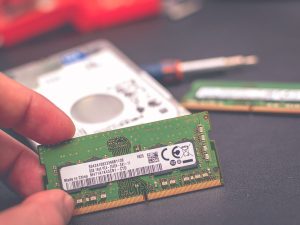
The minimum amount of RAM you should look for when buying a laptop for video editing is 16 GB, but for professional work 24 GB or more is recommended. For extremely demanding projects, such as those requiring 8K RAW files with deep color depth, you might want to look for laptops with 32 GB or more of RAM.
At the moment, laptops come with DDR4 or DDR5 RAM. While DDR5 RAM offers a slight performance boost over DDR4, it is still quite expensive and not worth the extra cost unless you are dealing with 4K footage regularly. If that's not the case, then the extra cost of DDR5 isn't really worth it – stick to DDR4.
To help you decide on the amount of RAM you need, here is a table that lists the recommended RAM amounts based on laptop price range:
| Price range | Recommended RAM |
|---|---|
| Low-end | 16 GB |
| Mid-range | 24 GB |
| High-end | 32 GB |
Deciding on a storage

The storage market has changed significantly in the past couple of years. Gone are the days of HDDs and even SATA SSDs – nowadays, PCIe M.2 (usually NVMe) SSDs are the standard. Most budget laptops (<$900) come with 500 GB of storage, while mid-range ones will usually offer 1 TB and high-end ones (~$2k+) usually feature 2 TB.
Video editing is one of the few areas where storage performance still matters and the requirements are measured in TBs, not GBs. For most users, a single NVMe SSD will be more than enough for all their projects. However, if you have a lot of open projects or want to keep them open for days on end, consider getting two drives – one for the OS and applications and another one for your project files. When choosing an SSD, make sure to check the benchmarks if possible – if there's 0 information on the SSD model, that's a red flag. Additionally, having plenty of USB ports (4+) allows for external storage if necessary.
When it comes to the recommended storage configurations for video editing laptops, the minimum requirement is 1 TB and an upgrade option. For the most reliable performance, we recommend 2 TB of storage and a 4 TB setup with an external drive for the high-end range. Take your time to compare models and research the specs to get the best bang for your buck – don't settle for less than you need!
How to choose the right display for Go Pro video editing?
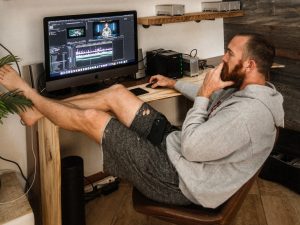
When it comes to video editing, the laptop display can be a make or break factor. You want something with good color accuracy, brightness, and contrast for optimal performance. So what type of display should you go for, and what specs should it have? Let's take a closer look!
The first thing to consider is the display size. The more area you have to work with, the easier it will be to edit your footage. Most 15-inch and larger laptops now come with 4K resolution displays, though some high-end models may even offer mini LED or OLED options. Meanwhile, smaller laptops like 13.3 inches usually feature Full HD resolution.
When it comes to panel types, you want to make sure to get an IPS or IPS-level screen at the very least. These provide superior color accuracy and clarity, making them ideal for video editing. You could also consider OLED displays, though they are still quite niche and expensive.
Other display features such as refresh rate may also come in handy. If you're into gaming and streaming, a high refresh rate will come in very handy. Lastly, if you're looking for a budget-friendly option, you may find some TN panels. However, these are not suitable for professional video editing due to their lower quality.
When it comes to color accuracy, you'll want to look for displays with at least 300 nits of brightness and 90% coverage of the Adobe RGB color gamut. This should cover most of your needs. If you're looking for something a bit more advanced, consider investing in an IPS mini LED or OLED panel with 400 nits of brightness and 95% or more of the P3 color gamut.
At the end of the day, the right display will depend on your budget and usage preferences. A minimum of 300 nits and 90% Adobe RGB should suffice for casual video editing, while high-end users can go for mini LED or OLED panels with 400 nits of brightness and 95% or more P3 color gamut coverage.
5 Best Laptops for Go Pro video editing
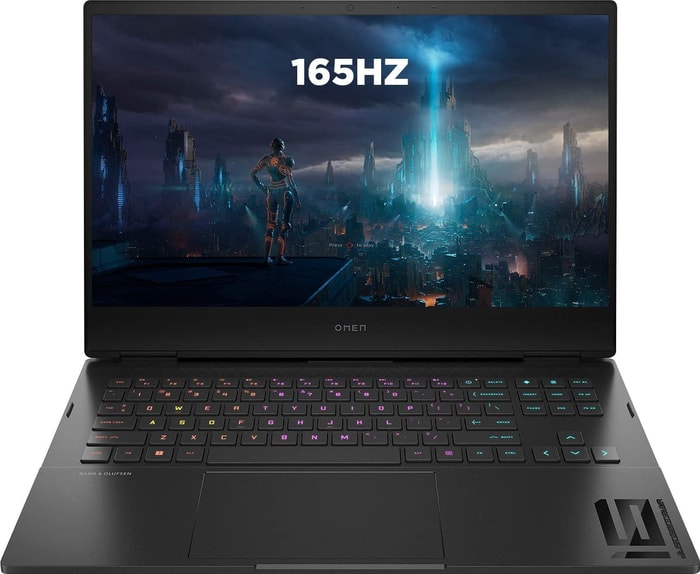
1.HP Omen 16
Go Pro video editing laptop- Superb processor (i7-12700H)
- Awesome graphics card (RTX 3060)
- Terrific display (16.1 IPS)
- Terrific memory amount (16GB)
Alternatives
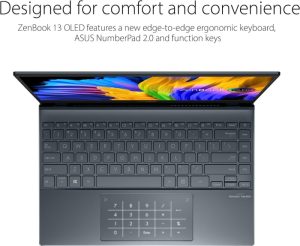
ASUS ZenBook 13 UX325EA-EH71
- Sleek, lightweight frame
- Powerful overall and gaming performance
- Weak speakers
- Display could be brighter
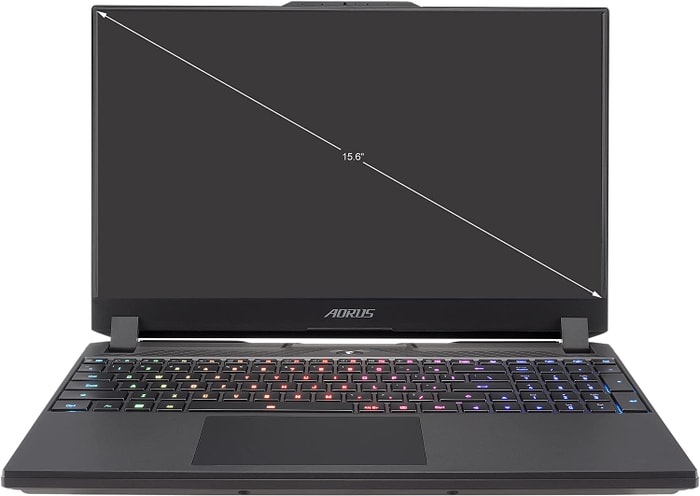
2.GIGABYTE AORUS 15 XE4
The GIGABYTE AORUS 15 XE4 is a power-packed laptop for Go Pro video editing.- Impressive 165Hz panel
- Wide colour gamut
- PCIe 4.0 SSDs
- Solid battery life
- High power usage at idle and low load
- No card reader
- Only one USB-A port
Summary
The Aorus 15 XE4 is a high-performance gaming laptop with impressive speed and responsiveness, making it an excellent option for Go Pro video editing. Its bright, wide-colour gamut 165Hz panel and PCIe 4.0 SSDs are perfect for handling high-resolution videos.
Reviews
Alternatives
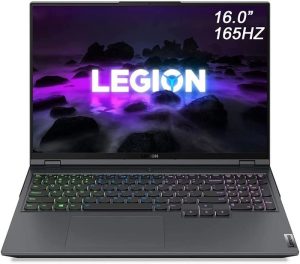
Lenovo Legion 5 Pro
- Excellent CPU and GPU performance
- Bright and high-quality display
- Limited SSD storage
- Bulky chassis
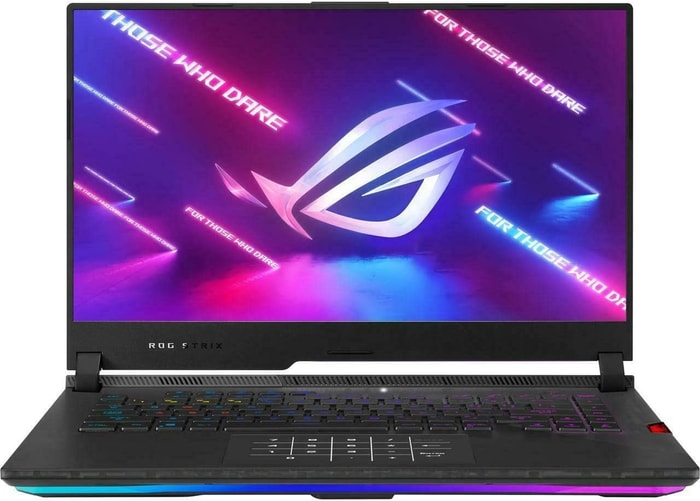
3.ASUS ROG Strix Scar
ASUS ROG Strix Scar is a powerhouse laptop for Go Pro video editing, but with a few limitations.- Fast Wi-Fi 6E
- Wide color gamut coverage with Dolby Vision support
- Unhindered Core i9-12900H and RTX 3070 Ti performance
- Limited display angle
- High heat and noise emissions under load
- Subpar battery backup
Summary
The ASUS ROG Strix Scar 15 G533 is a top-performing laptop that can easily handle Go Pro video editing with its Core i9-12900H and RTX 3070 Ti. However, it has some downsides like limited display angle, high heat and noise emissions under load, and subpar battery backup.
Reviews
Alternatives
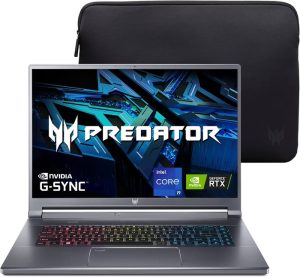
Acer Predator Triton 500
- High performance capabilities
- Excellent, bright 240-Hz display
- Soldered-in RAM
- Inaccessible SSD
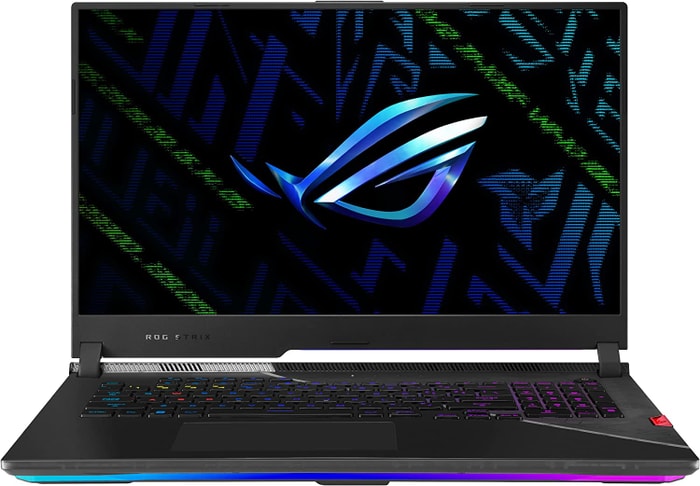
4.ASUS ROG Strix Scar G733CX-XS97
ASUS ROG Strix Scar G733CX-XS97: A Powerful Gaming Laptop with Great Display, but Inconsistent SSD Performance- Good QHD panel with 240 Hz
- High and stable gaming performance
- Extensive case illumination
- TB4, Wi-Fi 6E, and PCIe 4.0
- Inconsistent SSD
Summary
The ASUS ROG Strix Scar G733CX-XS97 is a high-end gaming laptop with top-of-the-line hardware, including the Core i9-12950HX, GeForce RTX 3080 Ti, and 240-Hz QHD display. It offers excellent gaming performance and extensive case illumination, with relatively quiet fans while gaming. However, it has inconsistent SSD performance, electronic noises, and comes with an additional premium for the HX CPU that might not be worth it for some users.
Reviews
Alternatives
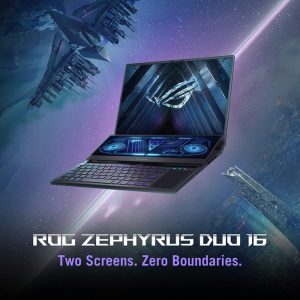
ASUS ROG Zephyrus Duo
- Impressive dual-screen design
- Blistering gaming performance
- Expensive
- Poor battery life
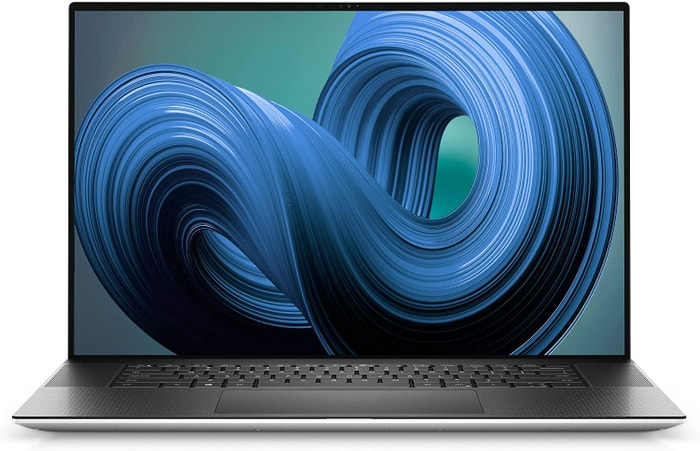
5.Dell XPS 17 9720
The Dell XPS 17 9720 is an excellent option for video editing, but the graphics performance and cooling system could use some improvement.- Excellent 4K display with AdobeRGB
- High-quality case
- Thunderbolt 4 PCIe 4.0
- High system performance
- Lower graphics performance than the predecessor
- Performance not completely stable under combined load
- Not Wi-Fi 6E compatible
- 720p webcam
Summary
The Dell XPS 17 9720 features an exceptional 4K display with AdobeRGB, high-quality case, fast card reader, and Thunderbolt 4 & PCIe 4.0. However, the laptop's cooling system is slightly weak, and the graphics performance has been reduced compared to its predecessor.
Reviews
Alternatives
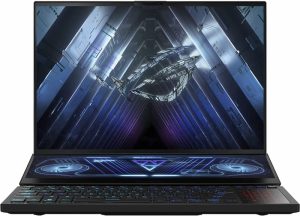
ASUS ROG Zephyrus Duo
- Impressive gaming performance with GeForce RTX 3080 Ti GPU and Ryzen 9 CPU
- Refined two-screen layout
- Expensive, especially as configured
- Awkward keyboard and touchpad layout
Table of the Best Laptops for Go Pro video editing
| Laptop | Price (approx) |
| HP Omen 16 | |
| GIGABYTE AORUS 15 XE4 | |
| ASUS ROG Strix Scar | |
| ASUS ROG Strix Scar G733CX-XS97 | |
| Dell XPS 17 9720 |
Hello! Thank you so much for your research! I’m looking for the best, smallest laptop. According to your survey the smaller screen laptops didn’t fare too well with the exception of the Dell XPS 13 9350 SLV – I think it lost points due to the high price.
Any reason why Macbook doesn’t appear in your list?
Hello! Thank you for your kind words!
Sadly, I didn’t have that many 13″ laptops documented with all their benchmarks at the time of writing the article.
Actually, I have very recently added MacBooks to my list but I have not updated the GoPro spreadsheet.
The reason why I did not include them at the time I was writing this guide was very simple – usually, most people are already set in their way of either buying a MacBook or a Windows laptop. Majority of my visitors come looking for a Windows laptop and that’s why I decided to keep my focus on them.
But you’re right – I should have included at least 1 MacBook in my list, if not in my Top 3 recommendations. After your comment, I added 2 Apple MacBook Pro models (which are still best MacBooks for professionals in my opinion) to the comparison with their benchmarks. In that case, Apple MacBook Pro 13″ is the best 13″ laptop for GoPro editing and Apple MacBook Pro 15″ is a great option if you prefer MacOS to Windows and you can pay ~$200 extra for it.
Thank you for the article it answered most of the questions I had about the MSI GL62-6QF with the i5 6300HQ, GTX 960m, 8GB DDR4 RAM, 1TB HDD and an empty M.2 slot PCI-E gen 3 SSD that’s ready to rock with 512 Samsung 950 pro I picked up recently (super stoked) and I’m also adding 8GB more RAM total 16GB. So I bought it mainly for audio recording on the go and gigs, maybe I’ll even try some games but I’ve been wanting to get into editing video. Is my new notebook around your articles mid-level tier system? Can it hang alright editing 4k?
As to the previous comment, I just want to say I was glad not to see anything Apple related, I’m done with them. I am an MSI guy now! Their top level stuff workstation and or gaming series is hard to beat from what I’ve seen.
Excellent article with all the minor details. Specially love the Explanation of CUDA vs CL
Thanks for going to that level of depth.
Hey,
Not the most clued on with this sort of thing but can you tell me an up to date opinion of the best laptop for Gopro 5 black editing 4K footage. with a price range of less than 1700
cheers,
Mark
What are your thoughts on the asus q534?
I see that this article is two years old. We recently got a GoPro Hero 5 Black. Recommendations for a computer and accessories to go with it?
Hello! Thank you so much for sharing this wonderful detail about video editing laptops! I love your review about MSI GE62 Apache Pro, it’s really good.
Thanks for putting this together and providing the data behind your recommendations. So many of these reviews leave out the data – and I’m just supposed to trust without verification.